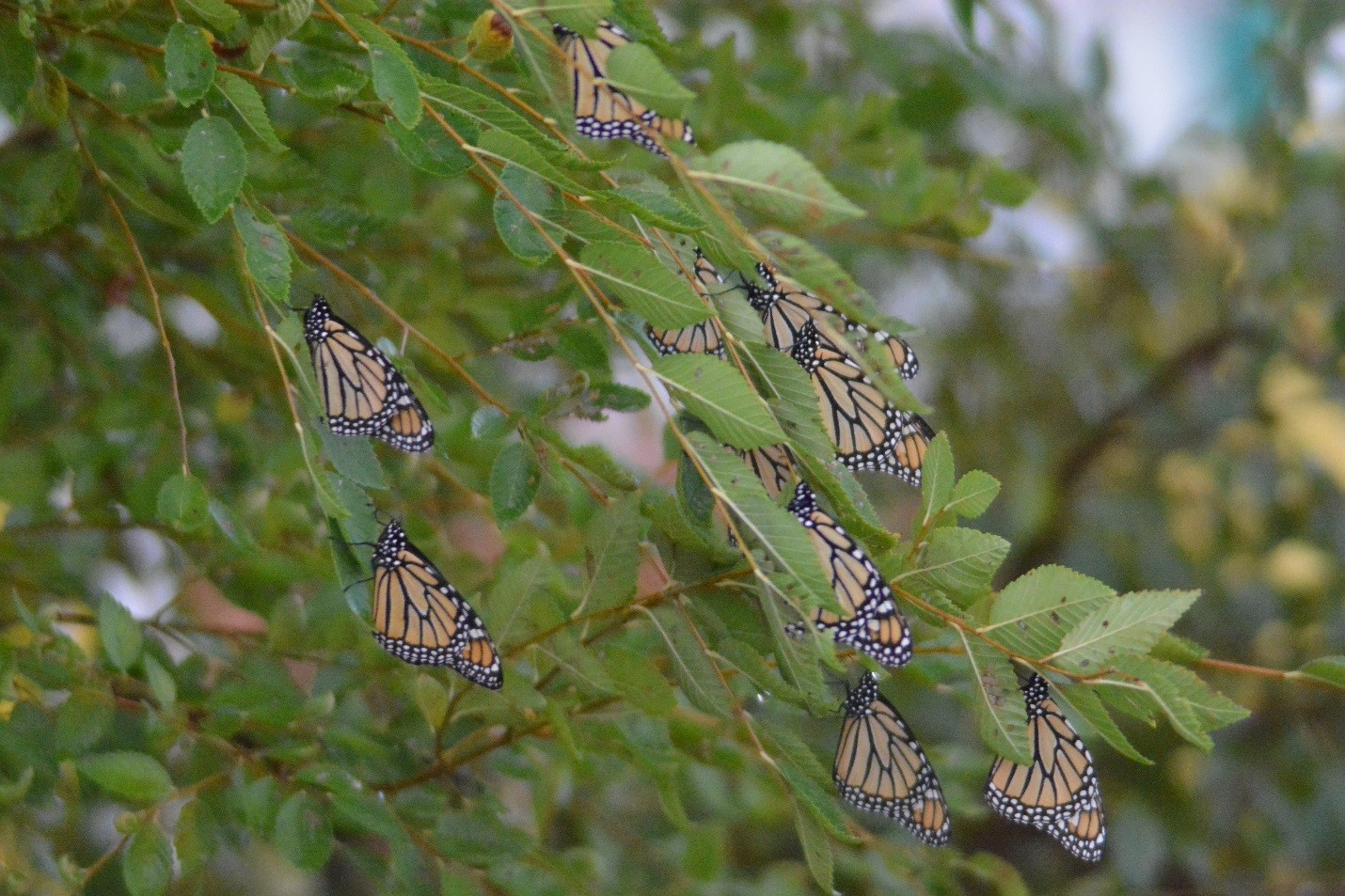Wild Pantex – Tracking Monarchs
Article by James D. Ray, Pantex Wildlife Biologist/Environmental Science Senior Specialist
In the early 1990s, I had the opportunity to affix coded tags to wings of dozens of monarch butterflies that volunteers and I captured during their southward migrations. My interest in these butterflies peaked again a few years later when Pantex Agronomist Monty Schoenhals impressed upon me to keep an eye on our local milkweeds for monarch caterpillars.
As both a beekeeper and a wildlife biologist, I have tuned in to increasing information that our populations of pollinators are suffering alarming rates of decline. A Presidential Memorandum released in 2014 led to the creation of a federal strategy to promote the health of pollinators, and this eventually filtered down to the Department of Energy-National Nuclear Security Administration Pantex Plant and other facilities within the DOE/NNSA complex.
Aeroecology - an area of technology that has long fascinated me - is the study of biota in the atmosphere using Nex Rad Weather Radar. The science is relatively new, but is developing rapidly, and is used for studies of insects, bats, and birds. During 2018, Pantex contracted with Dr. Jeffrey Kelly and the Aeroecology Group within the Plains Institute at the University of Oklahoma for research to evaluate whether Nex Rad Weather Radar could be used as a monitoring tool for the monarch butterfly and other pollinator species that migrate. I felt that since radar can detect tiny insects emerging from lakes and rivers, surely it could be used for some much needed monitoring of the declining monarch butterfly.
There are varieties of tools within radar technology that allow researchers to differentiate the shape of biota from that of raindrops, detect the heading of their flight, and even that they are compensating for the wind. Further analysis tools of radar aeroecology can estimate body size and population numbers within the sampling range of the radar for each scan. Preliminary results of our study look very encouraging. We recently shared our work at a conference in Texas, and we have submitted a proposal to give a presentation at a national level conference occurring in Reno, Nevada, this fall.
Declining populations of pollinators should be concerning to all of us because of the enormous benefits they provide to our society and ecosystems. It is the hope of Pantex, the University of Oklahoma, and the DOE-NNSA that this work result in a valuable monitoring tool that can be used amid many components that will likely be necessary to forward conservation efforts focusing on our declining pollinators.
Please feel free to share this link with others that enjoy wildlife or that appreciate entities that take great strides to contribute to wildlife conservation.

Photo 1. Monarch butterflies taking a rest on the DOE-NNSA Pantex Plant during their 2015 fall migration.

Photo 2. The blue in this radar image depicts what is estimated to be several million monarch butterflies passing over the Texas Panhandle on September 25, 2018.
